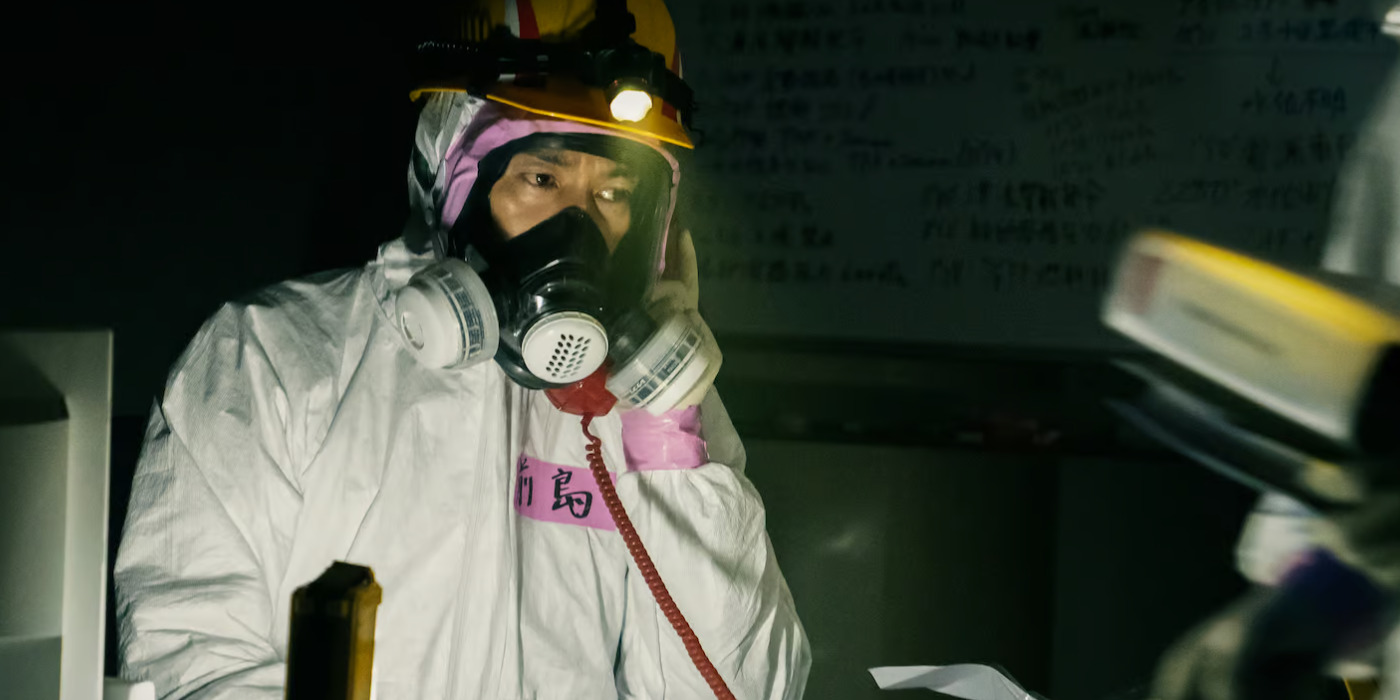Created by Jun Masumoto, Netflix’s ‘The Days’ is a Japanese drama series revolving around a damaged nuclear power plant and its race against the clock. Following a grave tsunami attack on the coasts of Japan, an accident at the Fukushima Daiichi nuclear power station suggests catastrophic outcomes. The show follows Masao Yoshida, the station manager, the lead control room operator, Maejima, and several other workers as they try and minimize the power plant’s damage.
Meanwhile, Japan’s Prime Minister and TEPCO executives try to maintain public communication while collaborating with the Fukushima Daiichi workers. The story features moving performances by Koji Yakusho and Yutaka Takenouchi in lead roles, who fuel the intense tragedy of the story unfolding throughout the eight-episode series. Due to the show’s detailed account of a historical experience, viewers might be curious to learn more about the story’s origin. As such, here is everything you need to know about ‘The Days’ and its relation to reality.
The Days: True Story of the 2011 Fukushima Incident
‘The Days’ is based on a true story. Written by Jun Masumoto, ‘The Days’ tells the story of the most significant nuclear accident in history since 1986’s Chernobyl. The show references numerous nonfiction works like The Yoshida Testimony and TEPCO’s Fukushima Nuclear Accident Analysis Report as valuable records of the 2011 incident. However, for the most part, it is based on a book by Ryusho Kadota titled ‘On the Brink: The Inside Story of Fukushima Daiichi.’

Journalist Ryusho Kadota gathered stories and testimonials from people directly influenced by the Fukushima Daiichi accidents and compiled them in his book. It also provides a glimpse into the political involvement during and ramifications after the incident. As such, the work serves as a profound resource for understanding the lived experiences and struggles of the affected parties. In fact, ‘The Days’ isn’t the first piece of media that was developed based on Kadota’s book.
2020’s ‘Fukushima 50,’ directed by Setsurô Wakamatsu, was a Japanese drama film that crafted its narrative inspired by Kadota’s book. The film focused on the workers present on the ground at the nuclear facility and highlighted their brave sacrifice. However, the film lacked an in-depth nuanced depiction of the political side of the Fukushima accident. In contrast, ‘The Days’ provides this nuance in compelling dosages within its narrative.
According to a report from a commission headed by former president of the Science Council of Japan, Kiyoshi Kurokawa, “The TEPCO Fukushima Nuclear Power Plant accident was the result of collusion between the government, the regulators and TEPCO, and the lack of governance by said parties.” As such, the Fukushima accident saw an intrinsic involvement by the Japanese government and TEPCO. Therefore, by having the institutions form crucial cornerstones in its story, ‘The Days’ effectively presents an authentic retelling of the event.
On March 11, 2011, a cataclysmic earthquake, later named “Tohoku,” hit the northeast coast of the Japan Trench. Consequently, a damning Tsunami, reaching up to 40 meters in height, overtook a stretch of the Japanese Pacific coast. As a result, several Fukushima Daiichi reactors experienced a power supply shutdown, which affected their cooling systems. The resulting accident led to radioactive contamination and painstaking heat removal procedures tackled by TEPCO employees, contractors, firefighters, and military crew.
Masao Yoshida, Fukushima Daiichi’s Chief Manager and Nuclear Engineer, headed the emergency response center and was hailed as a hero for years to come. When interviewed by Kadota for his book, one of the workers underlined Yoshida’s significance during the accident’s response and said, “Without Yoshida, we would have been lost.” ‘The Days’ employs Yoshida as the narrative’s central focus and provides a sense of fragile stability through him. Yoshida acts as an anchor for various plotlines and characters.
As such, Yoshida’s real-life heroism effortlessly lends itself to the viewer’s ability to empathize with Yakusho’s rendition of him on the screen. Similarly, various other characters and events are rooted in reality. The well-written arcs and emotionally ripe plotlines highlight the tragically gripping reality of the story in an authentic and respectful manner. Moreover, the show’s set designs bear a close resemblance to their real-life counterparts, especially in comparison to the Control Room of Fukushima Daiichi Nuclear Power Station photos released by TEPCO.
Likewise, TEPCO also released a number of videos of their TV Conferences at the time of the Fukushima Daiichi emergency response. The show also employs similar TV Conference meetings across involved parties, featuring it as a central point of its narrative. “I fear we are in acute danger,” Yoshida said in one of the videos released by TEPCO, “But let’s calm down a little. Let’s all take a deep breath. Inhale, exhale.” In the show, Yoshida similarly guides his fellow workers toward finding a valuable path through an adverse situation.
The Netflix production depicts intricate facets of the Fukushima accident while championing a message of hope and perseverance. Ultimately, ‘The Days’ is based on a true story, but it’s important to note that the show dramatizes the events following the Fukushima accident and affords itself creative liberty whenever necessary. Nevertheless, it strives to honor the people involved in the accident and seeks digestible meaning within the tragedy.
Read More: Where is Netflix’s The Days Filmed?


You must be logged in to post a comment.